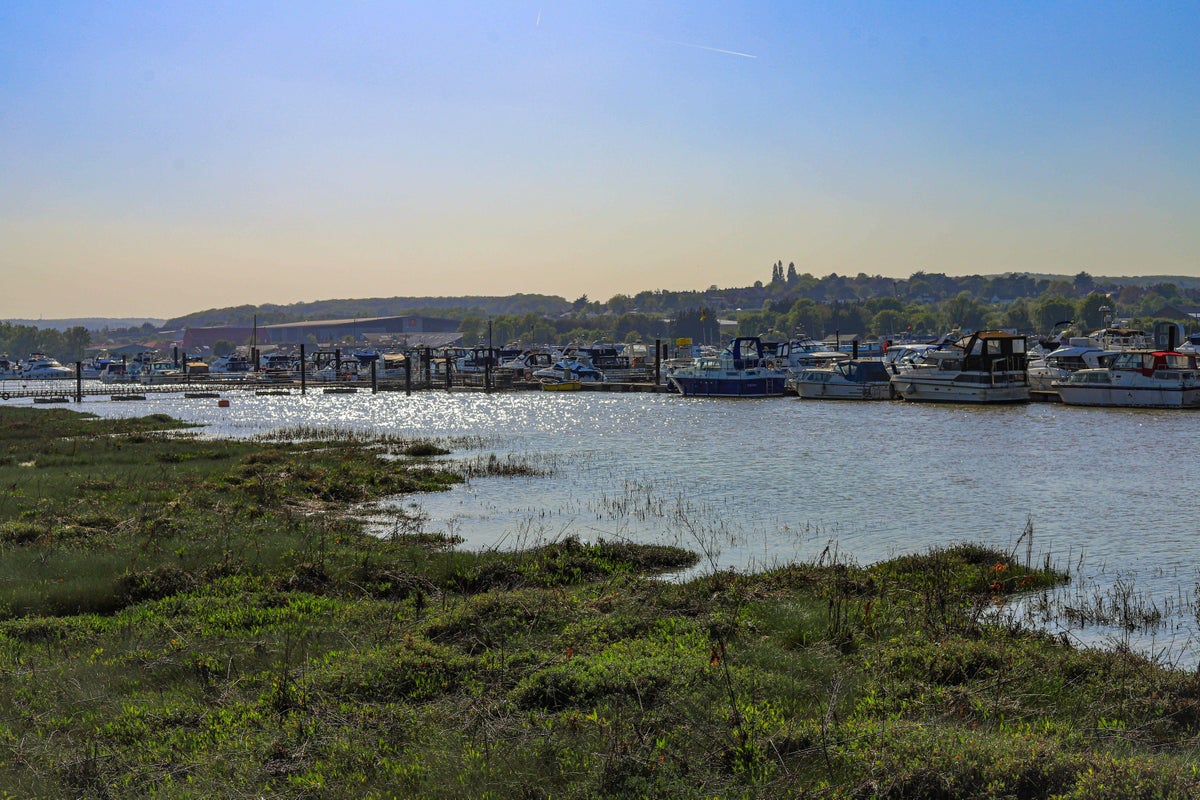
Estuaries across England and Wales are at risk of losing important habitat as it is “squeezed” out by rising seas and human development, a study warns.
Estuaries are key for wildlife such as wading birds, as breeding and nursery grounds for commercially important fish, and for storing carbon and improving water quality by filtering nutrients, contaminants and sediment.
However, a combination of rising seas and lower summer river levels as a result of climate change, and man-made barriers such as weirs and dams are putting freshwater habitat at the top of estuaries at risk, according to scientists who have previously coined the phenomenon “estuarine squeeze”.
Now researchers have identified and mapped the tidal freshwater and brackish zones with low salt levels – important areas which provide habitat and corridors for nutrients and wildlife – at the top of all 85 estuaries in mainland England and Wales.
Nearly 70% of these estuaries are blocked by barriers such as weirs or sluices where the estuary meets the river, and around half contain tidal freshwater and brackish zones, the analysis shows.

Some 19 estuaries with tidal freshwater and brackish zones had barriers preventing them shifting inland as the seas rise and push salty water further in.
This puts them at high risk of “estuarine squeeze” and potentially the complete loss of the important habitats, the researchers warn.
The Medway, Exe and Ouse estuaries in the south of England were identified as most at risk, the study published in the journal Estuarine, Coastal and Shelf Science found.
But the researchers from Nottingham Trent University said the findings also show the opportunity to recreate the wildlife-rich tidal freshwater marshes and wet woodlands that once lined the top of many of the UK’s estuaries – lost over the centuries to drainage for agriculture and development.
Recreating these marshes in the right estuaries would help combat estuarine squeeze, while also helping to improve water quality, store carbon and boost wildlife such as endangered European eels and migrating water birds.
There is “significant scope” for creating marshes on the tidal River Trent and River Great Ouse, recreating fenland habitats which would have once supported eel populations but have been drained.
While it is “clearly not cost-effective” to recreate marsh habitat in estuaries where the tidal freshwater zone is at risk of being rapidly squeezed out, the researchers argue their study could be used to identify locations where marsh creation could have the most benefit.
Recreating tidal freshwater marshes in estuaries which do not have boundaries such as weirs at the top could compensate for where habitat at risk of being lost to estuarine squeeze, they say.
They point to the Axe, Otter, Avon and Erme estuaries in south-west England which are near to some of the estuaries identified here as being most susceptible to estuarine squeeze.
But the researchers also say removal of barriers or projects to create “bypass channels” could become a priority in rivers and estuaries at risk of losing their tidal freshwater areas.
Dr Sally Little, an estuarine ecologist at Nottingham Trent University, said: “Tidal freshwater and low salinity zones at the top of our estuaries are crucial.
“They are home to many different plants and animals, are productive, help store carbon, cycle nutrients and improve water quality.
“They are also critical habitat and corridors for migratory fish moving between river and sea.
“Many of these zones are being squeezed due to climate change and development, and we now risk losing some of them completely.
“Our study underscores the urgent need for monitoring and management, but it also presents a unique opportunity to compensate for their loss through the creation of tidal freshwater marshes,” she said.
She added that tidal freshwater marshes have been showed to have similar or larger potential for storing carbon and providing natural services than saltmarshes, where much of the focus for restoring coastal habitat has been.







